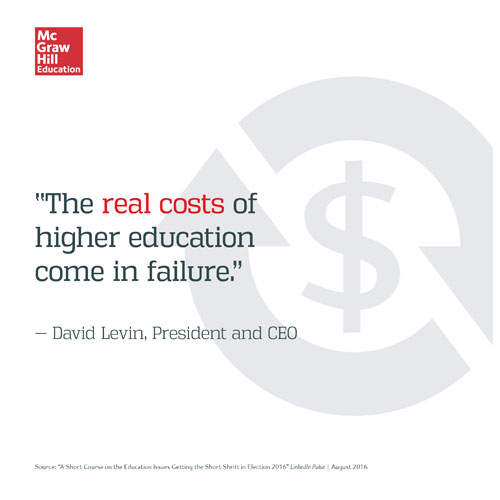Log In to My PreK-12 Platform
Let’s Talk About Education
A close look at six important education issues being ignored in the national conversation this election year.
The United States faces many crucial issues this election season – each deserving serious attention and thought. But it's worth noting that one of the issues fundamental to shaping our future has been discussed only superficially: education.
In the 21st Century, having a quality education is arguably the single most powerful driver of success, not only for individuals, but for the nation as a whole. Unfortunately, it has only been addressed in broad strokes by our presidential candidates, and most of the proposals that we’ve seen have focused overwhelmingly on access rather than on the equally crucial metrics of completion and overall student success.
The presidential election sets our national tone. But education is largely funded and run at the state level so both parties and both Federal and State Governments have key roles to play, irrespective of who wins the White House. That being said, wouldn’t it be great if both candidates picked up this baton? Below, I outline some of the most vital elements of the U.S. education puzzle, in both K-12 and higher education, that have yet to be discussed thoroughly at the national level.
K-12
- Completion. As a society, we often discuss the importance of earning a college degree, ignoring the fact that 18 percent of K-12 students in the United States will not go on to receive a high school diploma. We need to take a careful look at what’s working in K-12 education. What initiatives and technologies are helping students succeed, and how can we scale these to positively affect more lives?
- Preparedness. It’s smarter and cheaper to get something right the first time. The estimated cost of remediation for students who go on to college is almost $1.5 billion. We often tackle remediation as a higher education issue, but the problem begins much earlier in one’s education journey. Our K-12 students need to have a solid foundation that enables them to succeed in college, and we need to ensure that, when a student struggles with a specific skill or area of knowledge, it’s corrected before they move on to college.
- Infrastructure. Technology is instrumental to the success of so many of today's industries, including education. According to a recent report from EducationSuperHighway, an estimated 21 million U.S. students still lack access to high-speed internet in their schools. We need to equip our classrooms with an infrastructure that can provide each student access to the education resources they need to succeed. Expanding connectivity access in schools would be an excellent start, particularly since digital formative assessments – rooted in data analytics and adaptive technology – are essential for developing effective individual learning pathways.
Higher Education

- Cost. Both parties have touched upon combating student debt by making college more affordable, and potentially providing free tuition at public colleges. That’s an interesting proposition, but in addition to helping alleviate the costs that students themselves pay, we should take steps to eliminate unnecessary costs that are built into the system.
The real costs of higher education come in failure – the hidden cost of remedial education, for example, could be significantly reduced by focusing on preparedness. For every remedial course that a student doesn’t need to take, the overall cost of that student’s education comes down by thousands of dollars.
At McGraw-Hill, we have been working to make our materials as impactful as possible to support the best results. We can see adaptive digital courseware really supporting better results – and it is still only early days in this. We need to see an increase in the rate of digital adoptions and a much tighter focus on outcomes.
- Graduation Rates. College completion remains a major issue, with roughly half of all students who enter four-year school failing to graduate within six years and a staggering 70 percent of those in two-year schools failing to graduate within three years. According to the College Board, college graduates have two thirds more earning power over the course of a lifetime, which is great news for graduates, but quite daunting news for students who have taken on debt to pay for an incomplete degree. We need to do more to increase the percentage of college students who graduate.
- Workforce Readiness. Our college students should be equipped with the skills necessary to enter today's workforce. In fact, in our 2016 Workforce Readiness Survey, we discovered that only 40 percent of college students feel that college has been very helpful in preparing them for their careers. By leveraging the resources they currently have, colleges can do so much more to improve this statistic, including helping students better translate their skillsets into potential job opportunities.
We need to shift the education conversation to be more inclusive of issues such as these. If our presidential candidates can do just that, perhaps we can anticipate some real, much-needed change in our future. Over the next few months, I hope the topic of education gets the attention it truly deserves.